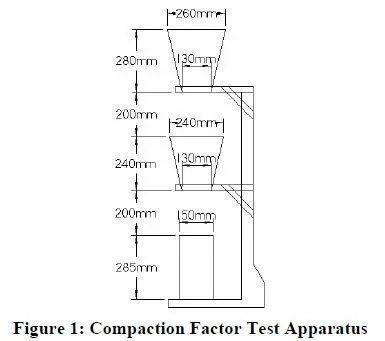The flow trough test (Bartos, Sonebi, and Tamimi 2002) is used to measure the workability of highly flowable concretes. It was originally developed for measuring repair concretes.
The test apparatus consists of a 230 mm wide, 1000 mm long horizontal steel trough.
Approximately 6 liters of concrete is placed in a conical hopper and allowed to fall from the hopper onto one end of the trough. The time required for concrete to flow a certain distance (typically 750 mm) down the trough is recorded. The test is conducted three times immediately after mixing and another three times thirty minutes after mixing. The set of tests is conducted at thirty minutes in order to characterize the workability of the concrete at the time of placement.
The concrete is agitated every five minutes in the thirty minutes between the initial and final sets of tests.
Advantages:
The test method is simple and inexpensive.
The results are a function of the time required for the concrete to flow both out of the cone and down the trough.
Disadvantages:
The test is only appropriate for highly flowable concrete mixtures.
The test is not standardized and not widely used.
